|
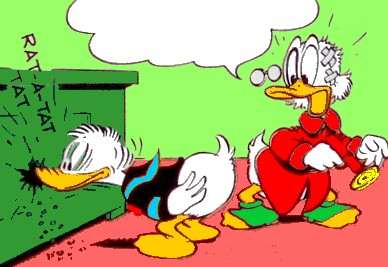
Donald's
beak would seem to contain all kinds of densities allowing him
to bend it in many ways. It can also be stiff and hard as a
board. |
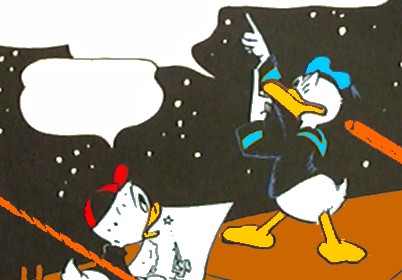
Disney
was not keen on their characters being drawn from below thus
exposing their beaks from an unfavourable angle. Still, Barks
did so on numerous occasions. |
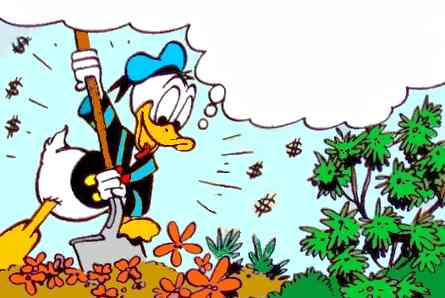
Donald's
tongue is not necessarily rooted in his throat. It is frequently
seen in other parts of his mouth, if it is not missing
altogether. |
|

Donald's beak changed length in proportion to the size of his head
several times. In Scandinavia this has evolved into a serious form
of dedicated research 'science' known as the
Rostrilongitudequotient(!). |
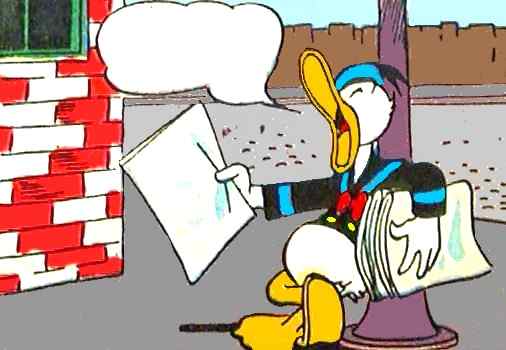
Barks
would occasionally seem to have some difficulty drawing upper
and lower beaks at the approximate same lengths. Many times
Donald received a too short lower beak compared to his upper
one. |
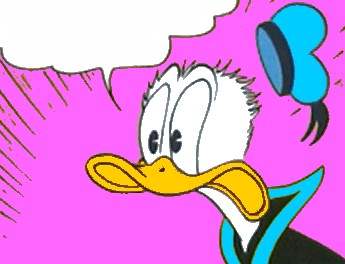
Donald's
beak easily opens in such a wide angle that Barks had to place
the lower beak beside the neck in order to obtain the desired
effect. This usually also meant that the lower beak was drawn
shorter. |
|
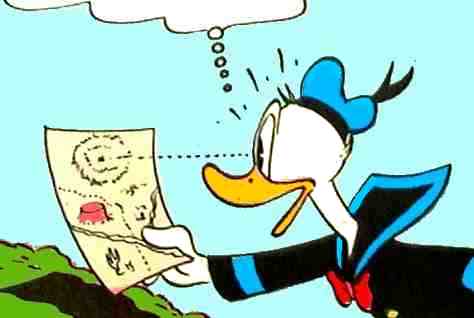
All
the ducks have a solid rim along the front end of their beaks, a fact
that Barks forgot on numerous occasions. |

Characters wearing pince-nez have an astonishing ability; the
eyeglasses sit firmly on their beaks at any angle. |
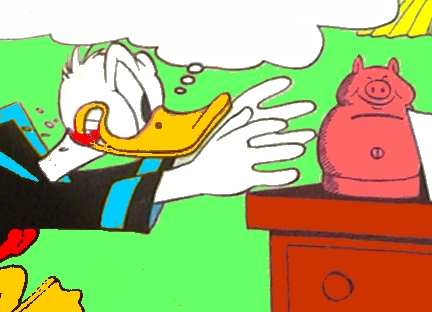
The
ducks have teeth but they are only visible when needed.
Also, their tongues are able to pass through clenched
teeth. |
|
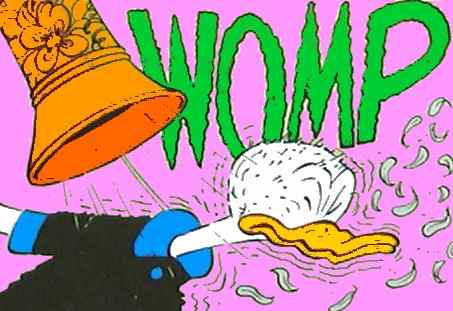
The
beaks can take unexpected shapes for short periods of
time when their bearers get surprised, annoyed, or attacked.
Examples are
curling, sneering, and wrinkling. |
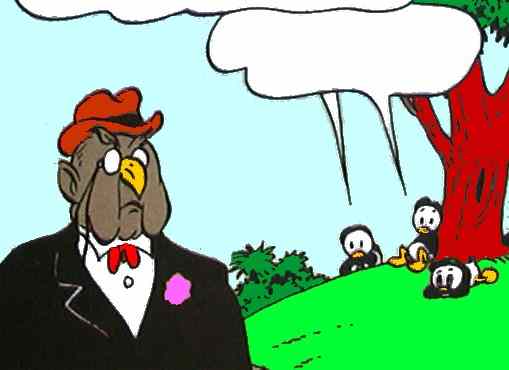
Barks tried to give specific bird characters their expected
beaks. But he did not always succeed; here is an owl character
without a lower beak!!! |
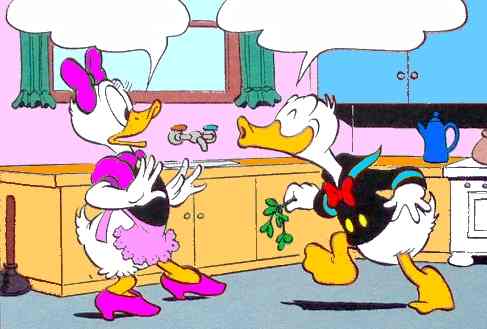
The
beaks are highly flexible and can form into smooth shapes
enabling them to deal with delicate matters such as playing the flute, whistling
a tune - or
kissing a lady... |